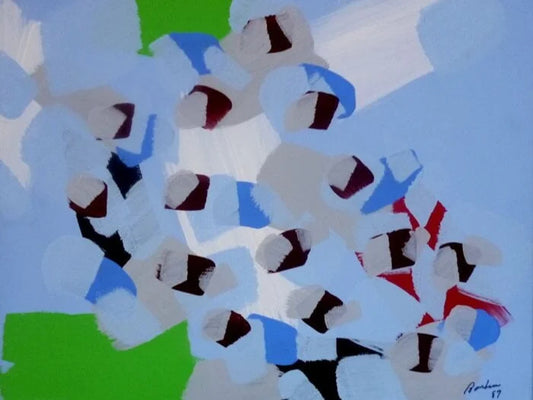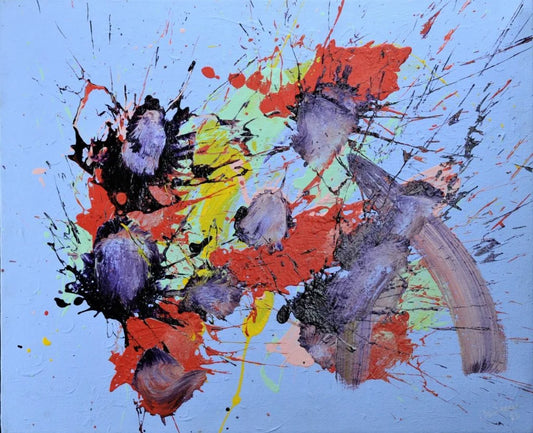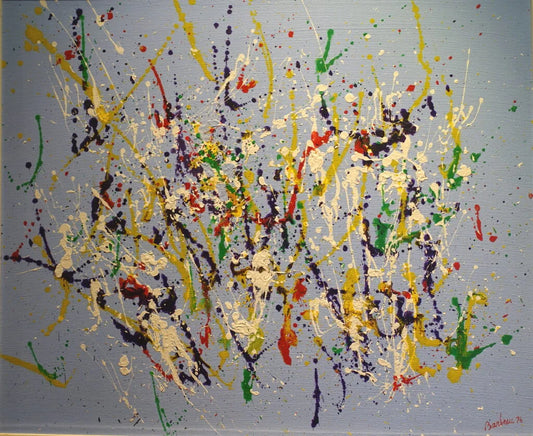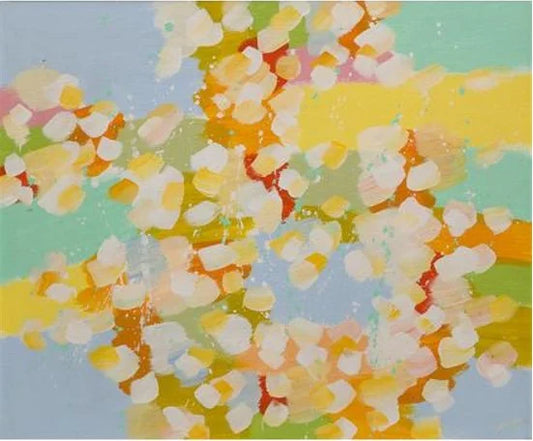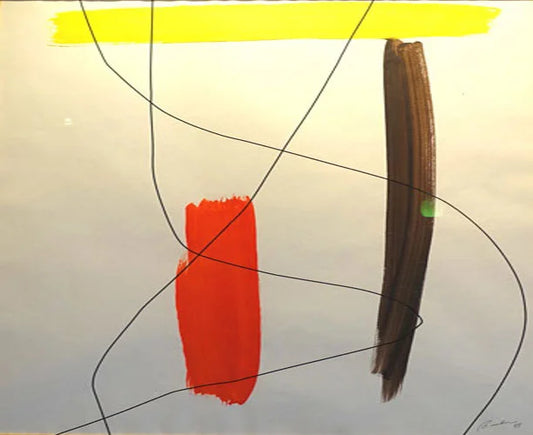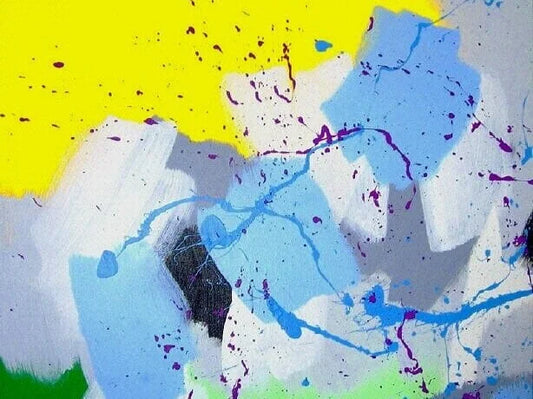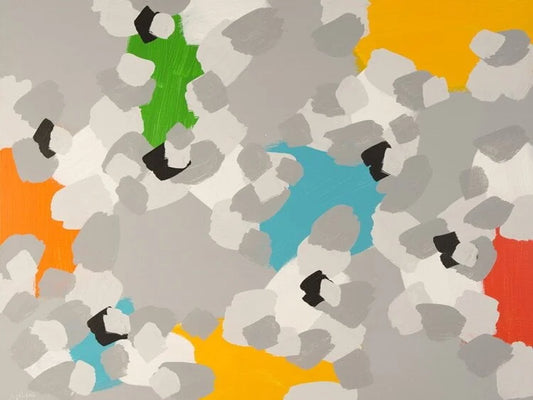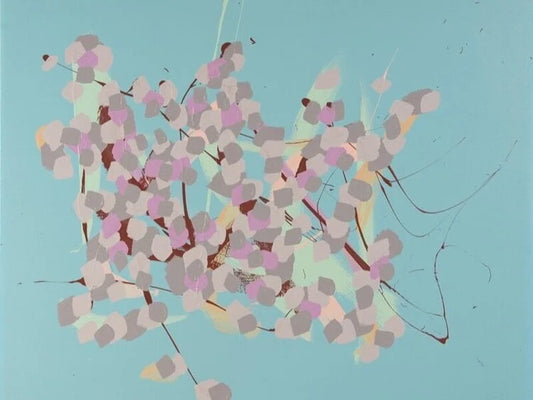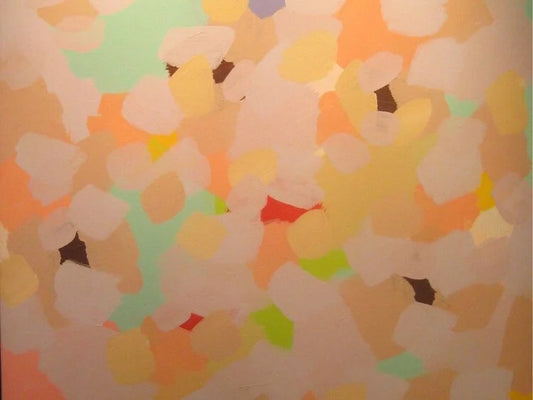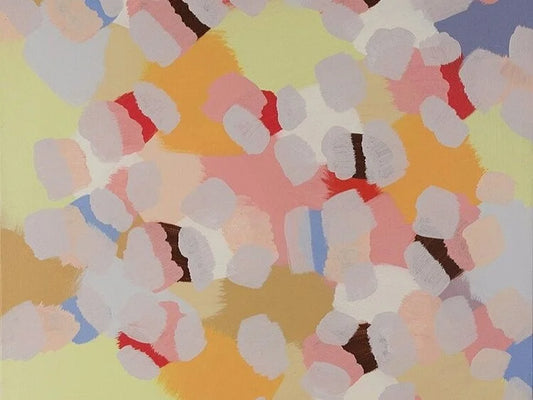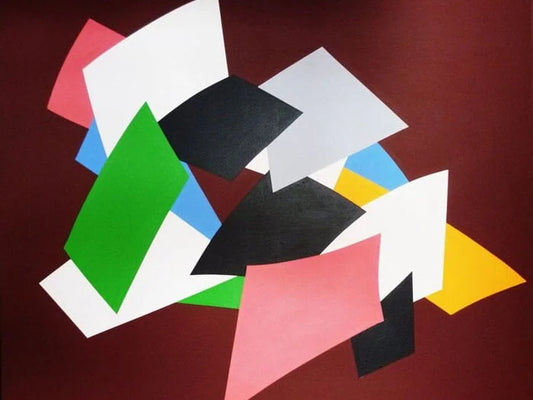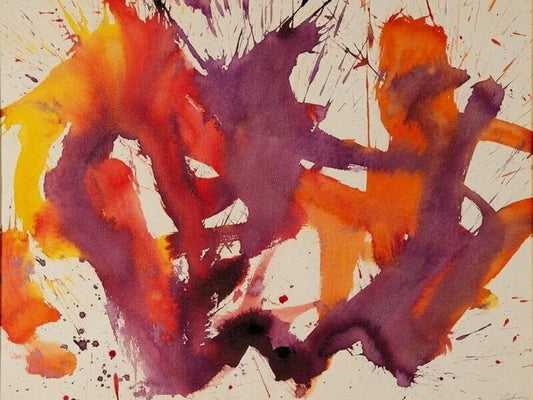Collection: Barbeau, Marcel
-
Marcel Barbeau - Les Chagrins de l’Azur / Acrylic/Canvas, 1987, 14 x 18 in // 35.56 x 45.72 cm
Vendor:Galerie NuancesRegular price $0.00Regular price -
Marcel Barbeau - Dualité / Acrylic/Canvas, 1976, 18 x 22 in // 45.72 x 55.88 cm
Vendor:Galerie NuancesRegular price $0.00Regular price -
Marcel Barbeau - Humeur Hivernal / Acrylic/Canvas, 1976, 20 x 24 in // 50.80 x 60.96 cm
Vendor:Galerie NuancesRegular price $0.00Regular price -
Marcel Barbeau - Massawipi / Acrylic/Canvas, 1978, 20 x 24 in // 50.80 x 60.96 cm
Vendor:Galerie NuancesRegular price $0.00Regular price -
Marcel Barbeau - Untitled / Acrylic/Paper, 1988, 30×22 in // 76.20×55.88 cm
Vendor:Galerie NuancesRegular price $0.00Regular price -
Marcel Barbeau - Le Sourire du Jour / Acrylic/Canvas, 1979, 26 x 26 in // 66.04 x 66.04 cm
Vendor:Galerie NuancesRegular price $0.00Regular price -
Marcel Barbeau -Untitled / Acrylic/Canvas, 1984, 24X30 in // 60.96X76.2 cm
Vendor:Galerie NuancesRegular price $0.00Regular price -
Marcel Barbeau - Untitled / Acrylic/Canvas, 1984, 24 x 30 in // 60.96 x 76.2 cm
Vendor:Galerie NuancesRegular price $0.00Regular price -
Marcel Barbeau - La Fille du Lac / Acrylic/Canvas, 1984, 32 x 26 in // 81.28 x 66.04 cm
Vendor:Galerie NuancesRegular price $0.00Regular price -
Marcel Barbeau - Untitled / Acrylic/Canvas, 1984, 32x26 in // 81.28x66.04 cm
Vendor:Galerie NuancesRegular price $0.00Regular price -
Marcel Barbeau - La Clé du Vertige / Acrylic/Canvas, 1995, 32 x 39.5 in // 81.28 x 100.33 cm
Vendor:Galerie NuancesRegular price $0.00Regular price -
Marcel Barbeau - Les Sentiers de l’Aube / Acrylic/Canvas, 1984, 48 x 40 in // 121.92 x 101.60 cm
Vendor:Galerie NuancesRegular price $0.00Regular price -
Marcel Barbeau - Untitled / Ink/Paper, 1972, 19.5 x 25.5 in // 49.53 x 64.77 cm
Vendor:Galerie NuancesRegular price $0.00Regular price
Request for information
Marcel Barbeau, a great automatist artist
A great Canadian master, Marcel Barbeau, ARC (Royal Canadian Academy of Arts) was an automatist painter born in Montreal (Quebec, Canada) in 1925 (died in 2016). Between 1942 and 1947, he studied furniture design at the École du Meuble de Montréal. With his drawing teacher, the contemporary painter Paul-Émile Borduas, he was introduced to art, particularly modern art, and discovered his artistic vocation. Marcel Barbeau participated in all the activities of the Automatiste group, a multidisciplinary artistic movement with social resonances inspired by surrealism. He signed the manifesto "Refus Global" published in 1948.
"Marcel Barbeau's artistic career now spans more than 70 years of creation. Painter, sculptor, dancer, performer, his contribution to our recent art history and to our modernity is undeniable. And this extends far beyond his automatist period. His pictorial and spatial language modulates over time into a multitude of formal and chromatic investigations that, even today, enrich his entire approach. Indeed. Looking back, we observe the formidable diversity that characterizes his long artistic reflection. A journey that, without abstracting it, goes far beyond the purely aesthetic dimension.
Original, daring, and a great lover of dance and contemporary music, Marcel Barbeau has never remained in his comfort zone. Over the years and periods, he has constantly remained on the lookout for new creative territories. Winner in 2013 of the Paul-Émile-Borduas Prize, the most important distinction for a visual artist in Quebec, Marcel Barbeau is undoubtedly one of the great artists of our modernity still alive. Moreover, the last few years have been particularly fertile in awards of all kinds, and this, across the country. » Robert Bernier
A great Canadian painter
He is a true creator who is always searching for new forms and modes of expression marked by intuition and experimentation. His mastery of colors, lines, spatial forms, and his great sensitivity make him one of the greatest Canadian masters of abstract art. From 1958 to 1974 and from 1991 to 1996, he lived and worked in the United States and Europe.
The years 1980 to 1984 were among his most colorful. The artist states: "I start with primary colors, then I accentuate them with secondary and tertiary colors." His paintings are often contrasting hues (white, blue, gray, yellow, pink, green, orange, etc.).
A Quebec painter, Marcel Barbeau's works have been the subject of several exhibitions in Canada, the United States, and Europe. These works of art can be found in several major museum collections, both private and public, such as: the Art Gallery of Ontario (Toronto), the British Museum (London), the Chrysler Art Gallery (Norfolk), the Musée des beaux-arts de Lyon (Lyon), the Musée national des beaux-arts du Québec (Quebec), the Montreal Museum of Fine Arts (Montreal), the Musée d'art contemporain de Montréal (Montreal), the National Gallery of Canada (Ottawa), the Stedelijk Museum (Amsterdam), etc.
Tribute to Marcel Barbeau (1925-2016)
Biography
Childhood and Around Global Refusal
Robert Bernier
[…] Childhood
Marcel Barbeau was born on February 18, 1925, on Saint-Hubert Street in Montreal's Plateau-Mont-Royal district. His father, Philippe Barbeau (1886-1928), was a carpenter by trade. A veteran of the First World War and a volunteer, he enlisted in the Royal 22nd Regiment on February 2, 1915. As you know, this strange war, which straddled the Belle Époque, from which the first vital signs of modernity emerged, was the scene of numerous atrocities, in which the technology of the time gave rise to devastating weapons and military strategies, such as the use of poison gas and destructive trench warfare. Countless survivors suffered severe after-effects. Philippe Barbeau died in June 1928, at the age of 42. Marcel was three years old. Élisa (Marcel's mother) and her four children were taken in by her brother, Georges Saint-Antoine. He had sworn to Philippe. He was a grocer-butcher on the Plateau Mont-Royal and a neighbor of the Barbeaus on Saint-Hubert Street.
According to Ninon Gauthier and Carolle Gagnon, authors of an important work devoted to the artist1, the relationship between Marcel and his uncle was difficult. The atmosphere at home was heavy. His uncle Georges constantly complained about the burden of his "family" obligations. Single, he was nevertheless engaged. However, he would not marry his sweetheart until the last children had left home in the late 1940s. Patient, Georges, proud too, and faithful to his promises; he was quite the man. Tenacious, with a strong character, he kept his word but not without clashes. He had a strong influence over the young Marcel, who worked for his uncle from the age of 9 until 1950 (at the age of 25). Marcel would undoubtedly draw inspiration from his tenacity, his honesty, and his sense of responsibility. And also from his independence of mind and his elegance on festive occasions.
And this adds to the already heavy climate: the economic situation in Montreal in the 1930s is catastrophic. The unemployed number in the tens of thousands. The city of Montreal, then under Camillien Houde (elected in 1928 then in 1930, defeated in 1932, re-elected in 1934, defeated again in 1936, won again in 1938...) is in a state of constant crisis. The metropolis will also be placed under trusteeship in 1940, overwhelmed as it is by social needs. It is in this gloomy climate that the young Marcel Barbeau lives, to which is added at home the great sadness of his mother. As a young teenager, he is interested in music and dance which help him to cope with the unbearable environment imposed on him. Slowly, the rebel in him will assert itself. Despair too.
"The difficult, the complicated, which will have a long journey to make before reaching the serenity of a more stable, perhaps less precious, balance. Intense emotionality in full evolution. Coming from, we know not how, the legendary Byzantium, priests, priestesses watch motionless a strange session of transmutations. Sometimes the moon on a pedestal illuminates them and looks at them through the window without understanding. From his scenes of luminous interiors coming from the depths of the night, we wake up at dawn in countless multicolored castles built on inaccessible rocks between heaven and earth. We believed in the advent of transmutation. Since then, Marcel continues to spare no surprises." Paul-Émile Borduas, Indiscrétions2
The Borduas group
In 1941, at the age of 16, Marcel Barbeau completed his tenth year. He was the only man in the house at a time when this was a very different reality from today. He had to look forward to the day when he would contribute financially to the well-being of his family.
He is restless, passionate and impatient. Talented, sensitive and skilled with his hands, he dreams of making a career in art, music or dance… However, this son of a carpenter naturally, and not without (consciously or not) making a connection with his absent father, heads towards studies at the Furniture School where he enrolls in the cabinetmaking craft program with his mother's approval.
Choosing the Apprenticeship section, the meticulous Marcel Barbeau quickly distinguished himself. He was even seen as a future successor on the teaching staff. At that time, he had no interest in the fine arts until his meeting with Borduas in the fall of 1944. His life's trajectory was about to change. The man who could have had a career teaching cabinetmaking was obsessed with the master of Saint-Hilaire. Thus, his passionate nature instead transported him to a world he had been completely unaware of until then. Borduas taught drawing in the Crafts section, where students must have completed their twelfth grade. Barbeau had completed his tenth grade. His good academic results persuaded the school authorities to transfer him there. The die was cast.
Marcel Barbeau saw Borduas as a guide, a father too. He would, moreover, keep for himself, against all odds, a deep admiration and immense respect. The discovery of fine arts is a revelation, especially since Paul-Émile Borduas invites us to nothing less than the celebration of a great revolution in the way of seeing, conceiving, and making art. To fully understand the scope of Paul-Émile Borduas as an educator, here is a comment from Fernand Leduc3: "Most of us are painters and had to start with the École des Beaux-Arts; our aspirations were essentially frustrated, our attitude from mistrustful became revolutionary. We then experienced several years of painful research through the clogged labyrinths of a false education. One day, we met Borduas, a surrealist painter, and he became our master: the veils fell one by one, and the truth appeared to us in its limpid nudity."
Marcel Barbeau began painting and sculpting in 1944. However, few works remain from this period, in fact, from all those created between 1944 and 1947. Most have been destroyed. The artist was passionate, impulsive, and literally transported by his discoveries. During the winter of 1947, he was particularly active. He painted a whole series of works that he considered innovative. He painted from start to finish and, without having the name at the time, he created the all-over ahead of its time, from 1946 to the present, notably with Rosier-feuilles… In May, he invited Borduas and the other members of the group to come and discover them. Disastrously, Borduas rejected them, only Claude Gauvreau defended them. Disillusioned and broken, Barbeau destroyed them. As for the sculptures, their design with fragile materials did nothing to help their longevity.
On June 7, 1948, he married Suzanne Meloche, whom he had met through his friend Claude Gauvreau. On August 9, Refus Global was published by Éditions Mithra-Mythe; he was one of the 16 signatories. And one of his sculptures, Coquillesévolue des mers brûles, was reproduced in the booklet. Refus Global was published at a time when Borduas's group was winding down. Jean Paul Riopelle, who had left for Paris "as a scout" in 1946, returned to Montreal and returned to the old continent in 1947. He settled permanently in the City of Lights in 1949. For his part, Fernand Leduc had lived there since 1947. The defenders of the cause were far away. Moreover, despite previous exchanges and the publication of Refus Global, the group split in two due to a disagreement over a text by Borduas. In short, Refus Global represents the end of one adventure and the beginning of several others that will in turn mark modernity in Quebec, each person flying on their own.
For Marcel Barbeau, the next few years would be difficult. To support his family, he worked tirelessly, leaving little room for his artistic creation. His marriage crumbled, and then in the summer of 1952, in another blow, Suzanne Meloche left the family home, leaving him responsible for their two children, Manon, born in 1949, and François, born in 1951.
Dark period
In 1952, Marcel Barbeau was 27 years old. His morale was at its lowest. He had to place his two children in care. Manon was entrusted to her sisters. François was placed for adoption. Financially, he was in dire straits. His relationship with his family (mother and sisters) was practically nonexistent. His contact with his fellow automatists was virtually at a standstill. Emotional and sensitive, he was deeply shaken, and his reputation as a "difficult character" only grew stronger. A period of psychological wandering followed, more or less, during which he made numerous trips to Quebec, first to Rouyn-Noranda, where he obtained a position as a drawing teacher. Then several stays in Quebec City and Montreal. From 1953, he worked as an assistant to the photographer Gaby. These new positions he would continue to hold until the early 1960s.
Gauthier, Ninon and Carolle Gagnon. Le regard en Fugue, Editions du Centre d'étude et de communications sur l'art, 1990.
Les Indiscrétions is a handwritten text written, according to Jean Fiset, by Paul-Émile Borduas in the winter of 1947-1948, in which he describes some of the members of his group: Marcel Barbeau, Bruno Cormier, Claude Gauvreau, Pierre Gauvreau, Fernand Leduc, Jean-Paul Mousseau and Jean Paul Riopelle.
Leduc, Fernand. Vers les îles de lumière – Écrits, 1942-1980. Montréal, Hurtubise HMV, 1981. p.10.
THE PLACES
Throughout his adult life, from the beginning of his artistic creation until his final years, Marcel Barbeau forged ties with a multitude of people in the art world, across the globe. A world he inhabited elsewhere. Conversely, his career is impressive. He lived in Vancouver, New York, California, and Paris several times, his second home after Montreal. Already, from the early 1960s, his work was well represented in Toronto, where he exhibited regularly. He was represented by major galleries including Dresdnere and Kaspar. In New York, he rubbed shoulders with several important American artists and critics. He was associated for several years with the East Hampton Gallery, where his works were acquired by several major American collectors. Later, in the early 1990s, he presented an exhibition at the Westbridge Gallery in Vancouver…
In Paris, where he lived for several years and on several occasions, he was closely linked to the art critic Charles Delloye. He was represented by the Galerie Iris Clert, associated, among others, with Yves Klein, the New Realism movement, and the avant-garde in general. In 1964, on the sidelines of the Venice Biennale, it organized the event La Biennale flottante. Marcel Barbeau participated. Madame Clert died in 1986. Marcel Barbeau was subsequently represented by the Galerie Donguy, which closed its doors in 2000. He is now represented in the City of Lights by the Galerie Chauvy. The complete list of his solo and group exhibitions in Europe, Canada, and the United States would be (very) long to compile; you can consult his dedicated website, marcelbarbeau.com, for an overview […]
[…]Marcel Barbeau created in several places, and here the word several is not a euphemism! Some of these places, he was particularly fond of, let us think of Saint-Irénée (often), Pointe-au-Pic, and Baie-Saint-Paul, in Charlevoix, where he stayed many times throughout his life. In Saint-Matias-sur-le-Richelieu, in Quebec, in Abitibi, and in Saint-Hilaire in the 1950s. In the 1950s and 1960s, in Bic, and in Rimouski. From the end of the 1970s to the very beginning of the 1980s, in Sherbrooke and Sutton (from the mid-1980s to the early 2000s)… In Europe, in multiple places, in Paris including the Cité universitaire. Not to mention the Basque Country, where he worked diligently from the beginning of 2000 to 2007... In the south of France, etc. In Montreal, he has had several workshops over the years, including his fabulous location on Amherst Street and, in recent years, the one on Saint-Ambroise Street.
It should be noted that his partner, Ninon Gauthier, completed her doctoral thesis at the University of Paris-IV-Sorbonne, Marcel Barbeau, Echoes and Metamorphoses, in 2004.
Marcel Barbeau was a person driven by great curiosity, which explains his propensity to use a multitude of materials. He was interested in contemporary music, science, poetry. He loved to cook... In short, Marcel Barbeau traveled the world, nourished himself with a myriad of things and, in the years to come and in light of the major retrospective that will be dedicated to him at the Musée nationale des beaux-arts in Quebec City in 2018, there is no doubt that our collective reading of his work will continue to evolve for a long time to come. Thank you, Marcel Barbeau.
Source: Robert Bernier, Revue Parcours, Parcours regard, numéro 88, avril / mai 2016, Hommage / Tribute Marcel Barbeau (1925-2016), research Ninon Gauthier, page 60-63.
THE WORK
SURFACE PLANE
Robert Bernier
MULTIDISCIPLINARY
When we talk about Marcel Barbeau, we most often refer to the painter. Probably because he was one of the 16 signatories of the Refus Global in 1948, when he was only 23 years old. He is, of course, one of the most significant artists in our painting, but—we often forget—also in our sculpture. In fact, his entire work is inscribed through the meshes of our modernity through its transdisciplinarity. For his expression has touched on prints, drawings, collages, photography, performance, and installation as well. His relationship as an artist is affirmed in several aspects, including the following: the scope of his pictorial and spatial research, the diversity of his approach over time. Moreover, an aspect to consider: his creative longevity. More than 70 years! The sum of all this expresses a wealth of languages which, over the decades, have been modulated in many ways, sometimes even in different ways from each other, but fundamentally all united by a vital link: space […]
Source: Robert Bernier, Revue Parcours, Parcours regard, number 88, April / May 2016, Hommage / Tribute Marcel Barbeau (1925-2016), research Ninon Gauthier, page 60-63.

